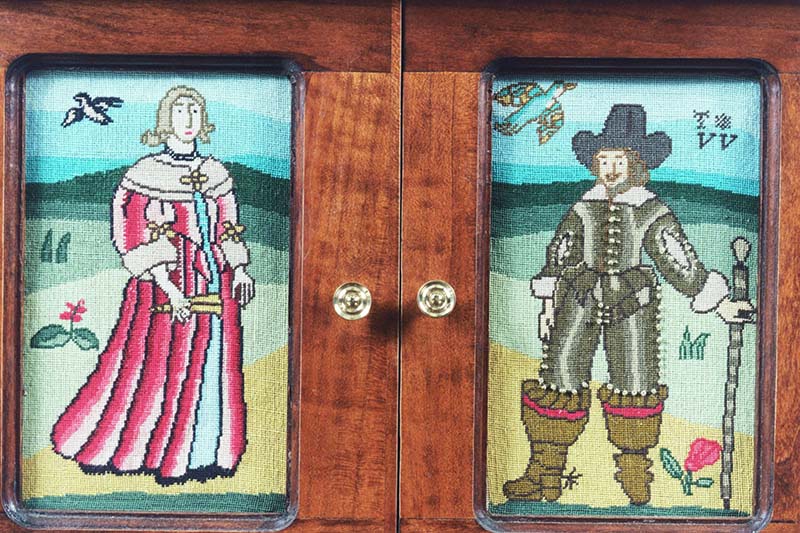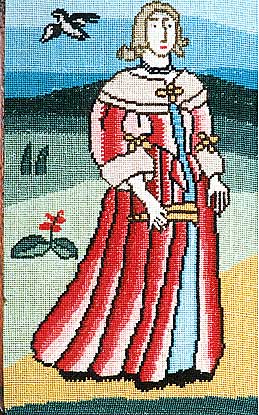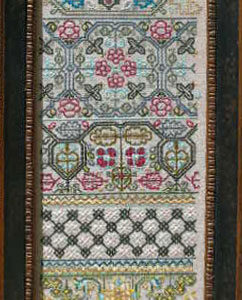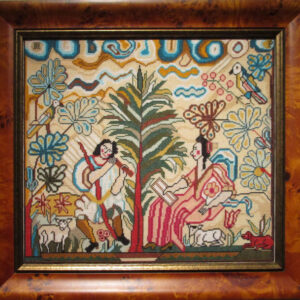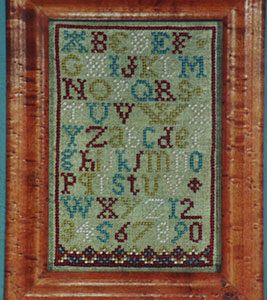The Betrothal
From: $10.00
The tent stitched subjects in this design were excerpted from a mid-seventeenth century canvaswork picture depicting a cavalier and a lady.
Description
The Betrothal after a 17th Century Canvaswork
The tent stitched subjects in this design were excerpted from a mid-seventeenth century canvaswork picture depicting a cavalier and a lady. The scene is one of the most non-biblical subjects found on canvasworks made between 1640 and 1660 in England, and were often made as betrothal or marriage portraits. The careful depiction of costume is noteworthy in this fine example. In almost every example, the gentleman stands on the right, the lady on the left. The name of the stitch used – tent stitch – comes from the French word tenter, meaning to stretch, as the work in progress was usually stretched over a frame (or tent). Tent stitch, worked in silk or wool thread on a linen canvas, was probably the most common embroidery technique used in the seventeenth century. It created a durable object, was easy to execute, and fine enough to produce delicately shaded designs that approximated the look of very expensive and rare woven tapestries, affordable only by the very wealthy.
The lady’s costume was the popular fashion in England around the reign of Charles I, revealing a higher waist and full sleeves on her jacket. Ribbons adorn her sleeves and bodice (ribbon was also used to fasten the cuffs). The red overdress exposes a variegated blue under-dress. She is holding a fan.
The gentleman’s doublet shows fashionably slashed sleeves: open seams at the front of the sleeves which were intended to allow the shirt underneath to be seen. Turned back cuffs, or possibly floppy hounds – ear formal cuffs, protrude at his wrists. The pointed tabs below the waist of the doublet would have had eyelet holes to support the breeches, by lacing them to the doublet. The front of the doublet was stiffened inside with two triangular shaped belly pieces, keeping the doublet’s shape and ensuring good posture, similar to a lady’s corset. (In fact whalebone was sometimes used in doublets as well as corsets.) His substantial leather boots are covered with half shoes at the bottom, and bear spurs. A sophisticated use of artistic foreshortening in the design of his left leg enhances his swaggering posture. His broad-brimmed hat and turndown collar were all fashion statements popularized by King Charles I. The buttons and buttonholes on his doublet front and sleeves and trousers were created with French knots, applied after the tent stitch design is completed.
Worked on 35 count linen, in petit point, the finished panels will measure approximately 3-1/2″x6″.
Additional information
| Kit Type |
|---|

